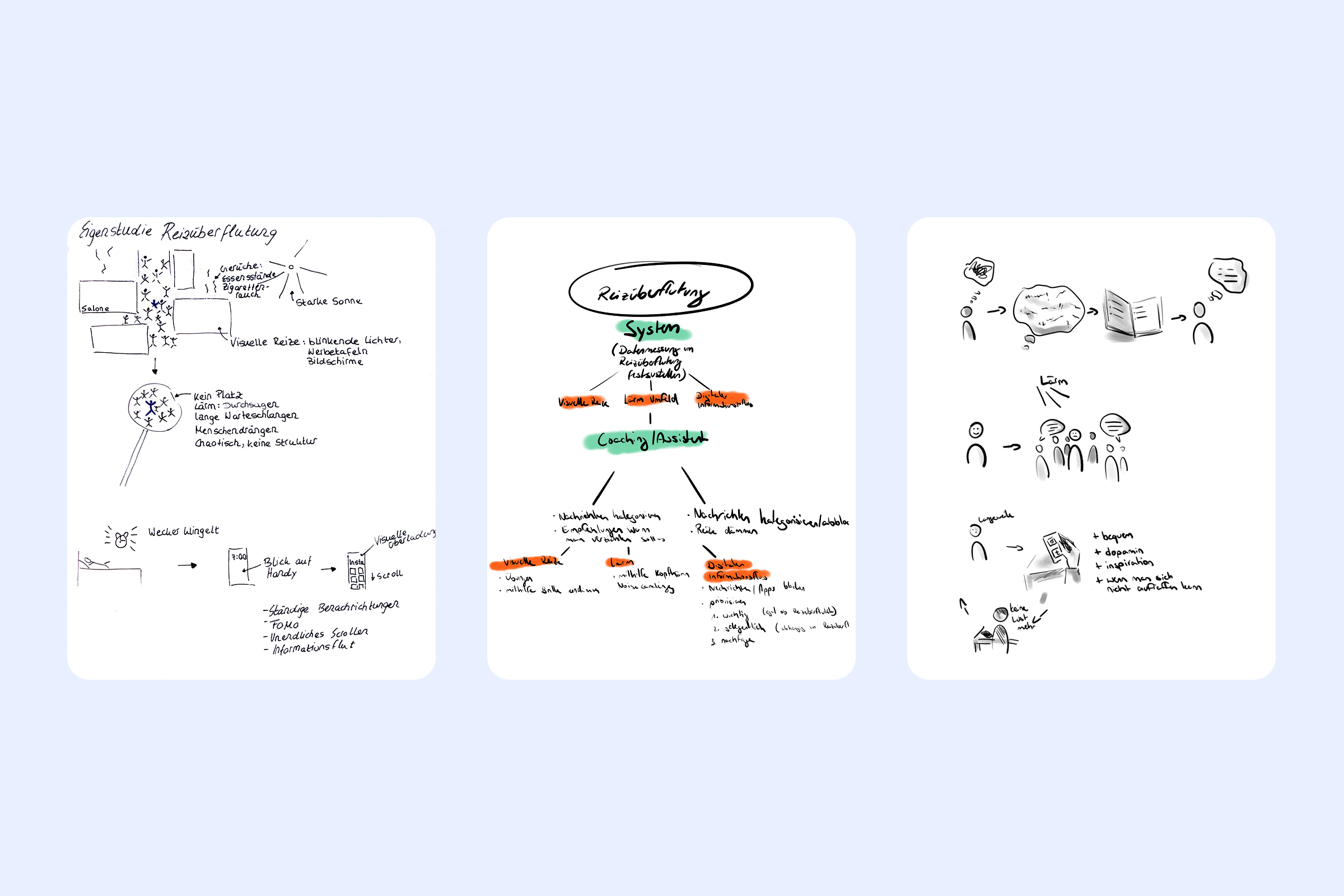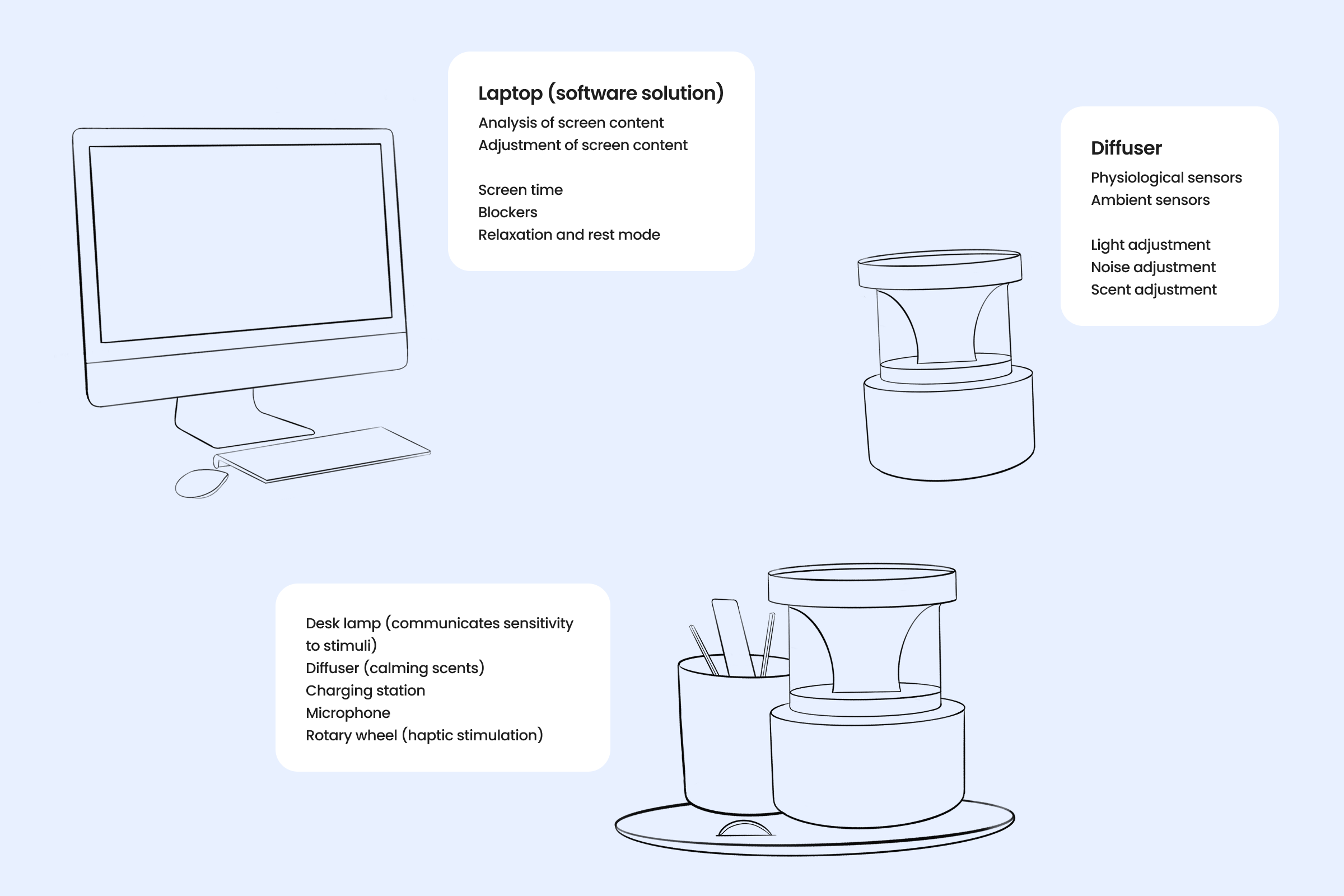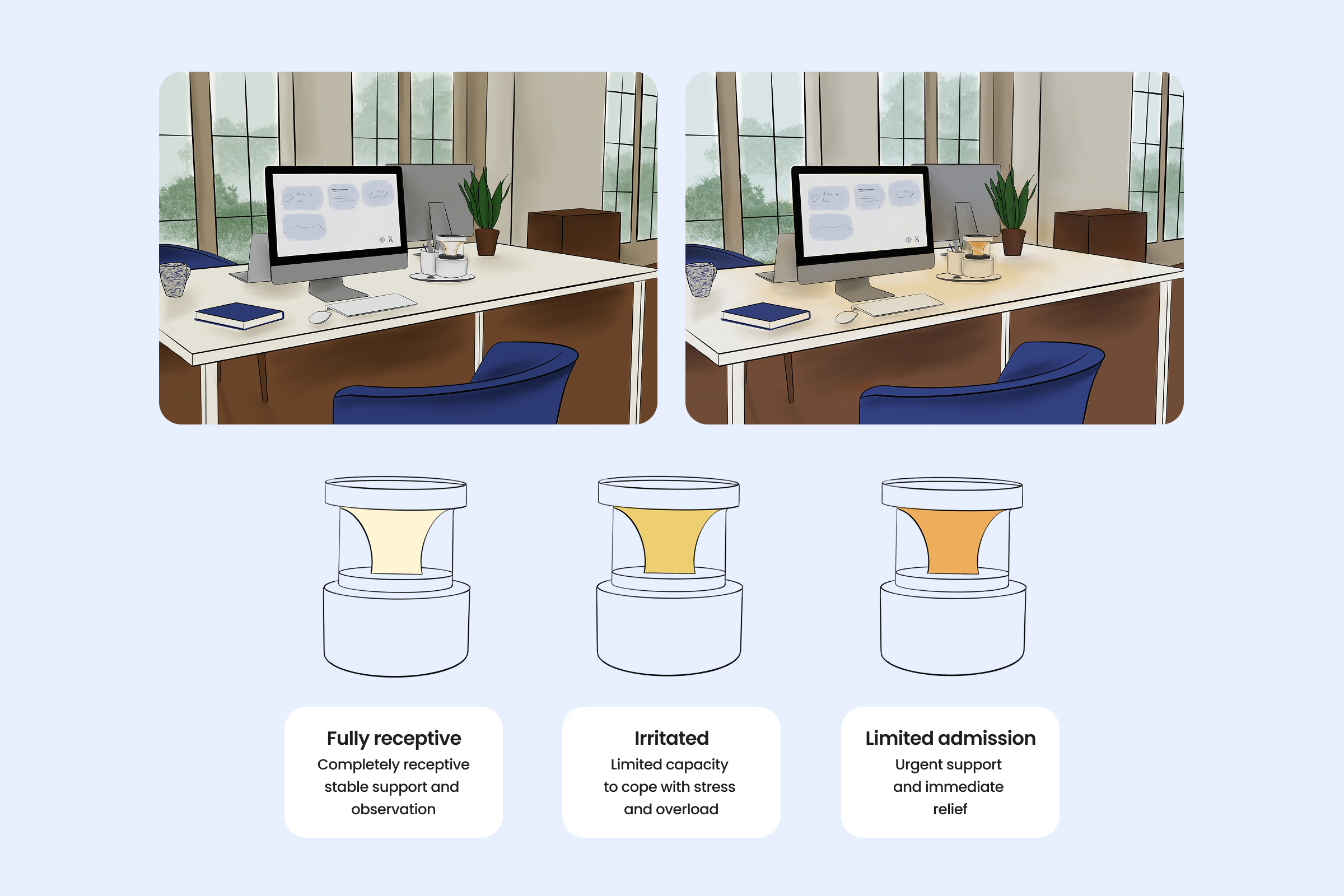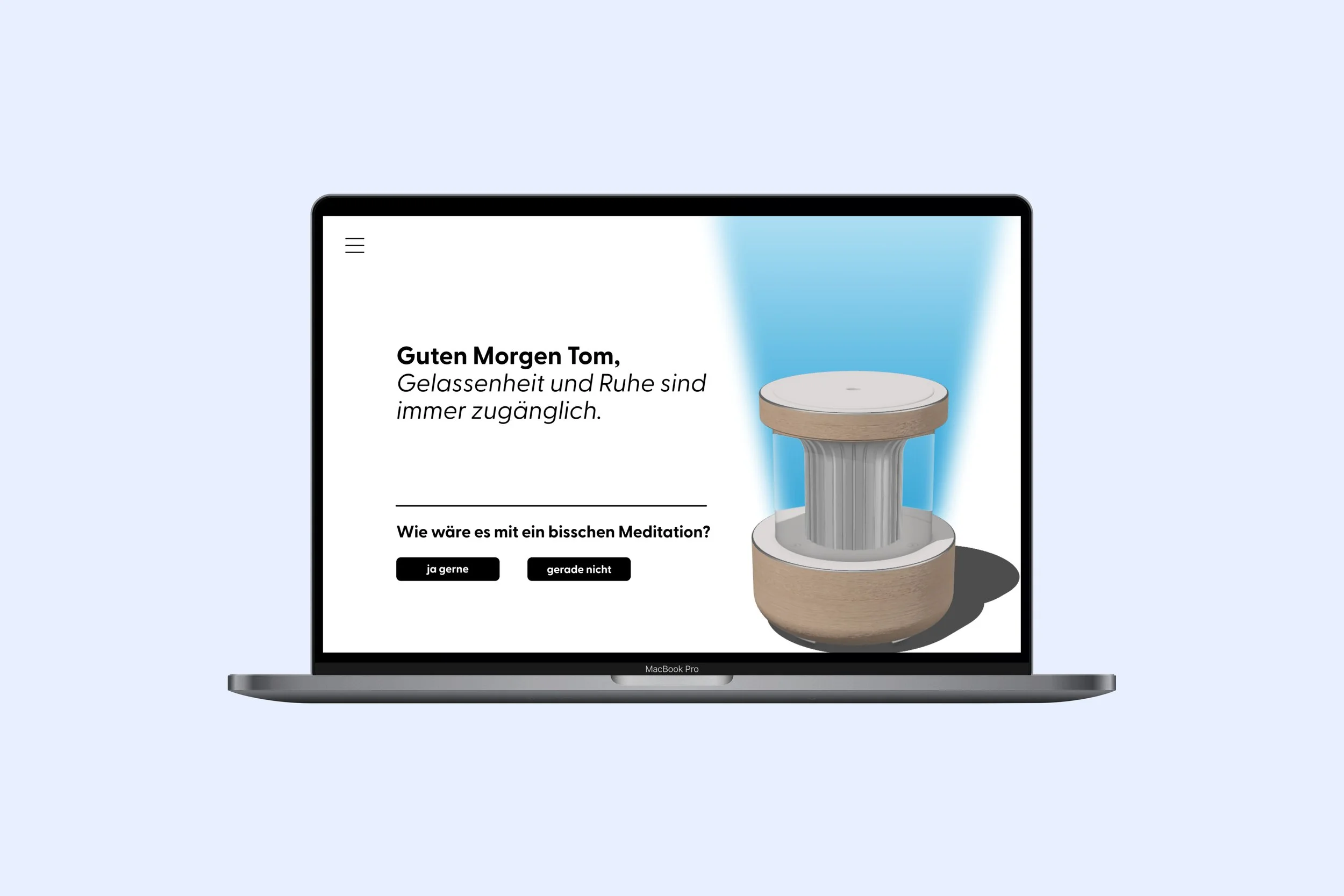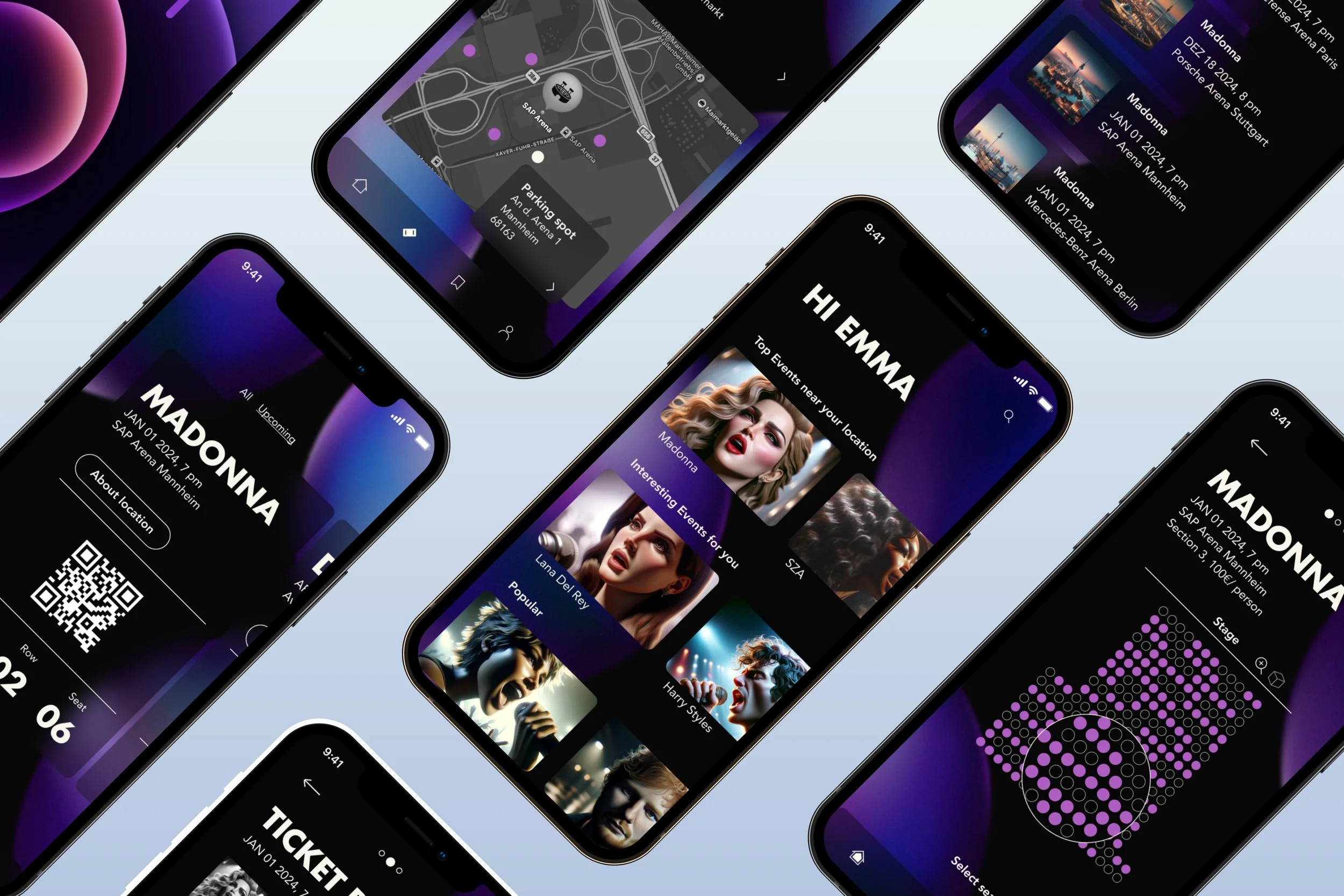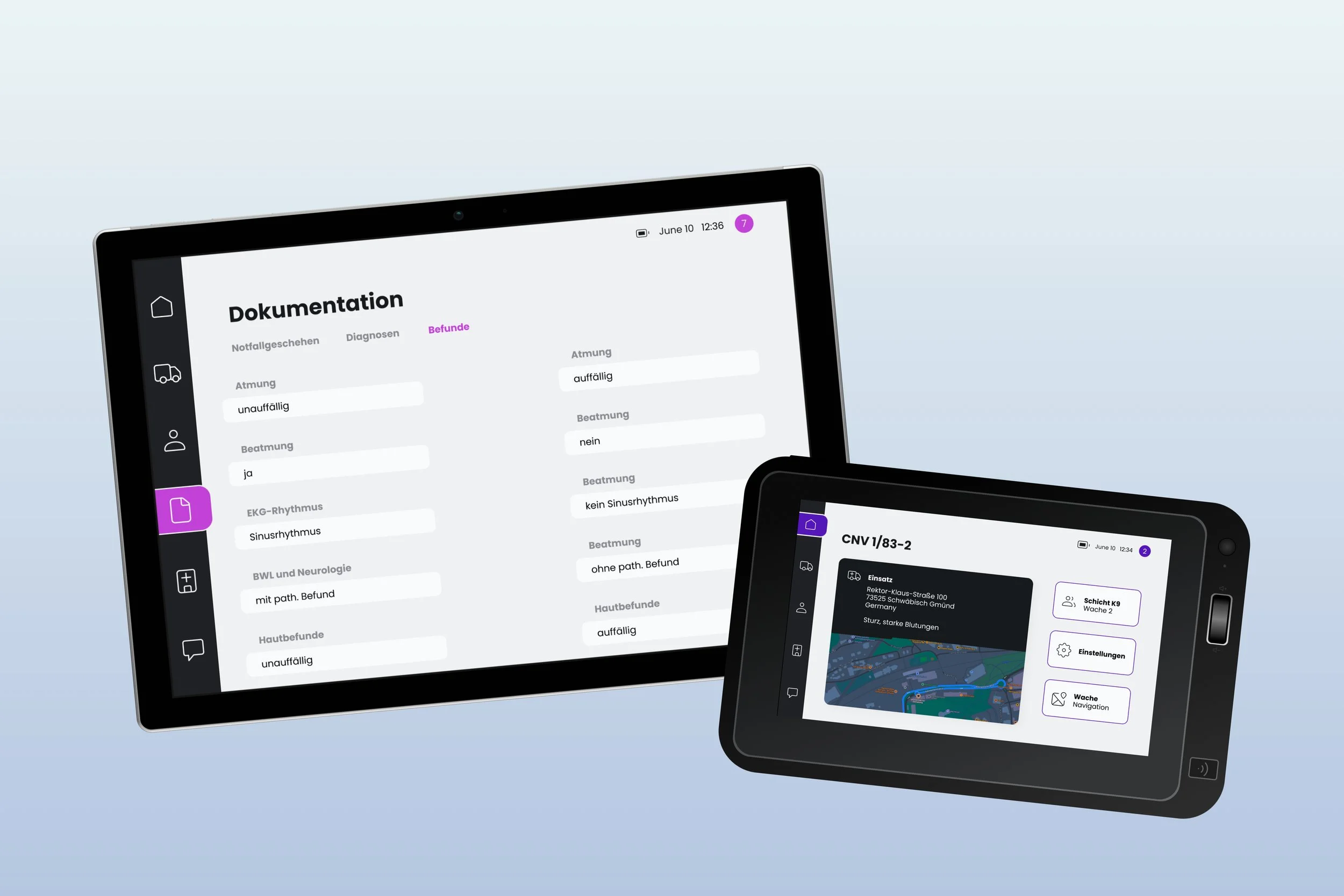An adaptive system combining software and a sensory diffuser.
STIMULUS OVERLOAD
team
Emily Kühl
Ron Eros
my role
ideation
research
concept
ux design
course
invention design by
Markus Turber
year
2025
timing
5 months
problem
Sensory overload describes the state in which the brain can no longer process a multitude of simultaneous sensory impressions. The result is cognitive overload, which often leads to stress, exhaustion and concentration problems. In an increasingly digitalised and fast-paced world of work, this state is becoming permanent for many people. Naturopath Pavlos Mentis observes: ‘The overwhelming majority of my patients struggle with sensory overload in their everyday working lives. This constant sensory overload leads to considerable stress and impairs their ability to concentrate and work productively.’ Sensory overload is therefore not a marginal phenomenon but a growing social problem that fundamentally affects how we interact with our environment, technology and attentiveness.
research
In order to understand the phenomenon of sensory overload more precisely, we first compiled analogous considerations and then conducted a thorough research.
In the process, we have found that visual impressions such as light, colors and shapes compete with auditory stimuli such as noises, voices or music. Added to this are olfactory (smells), gustatory (taste) and haptic stimuli (touch, temperature, pressure), a complex interplay that our brain must continuously sort and evaluate.
In addition to the type of stimulus, its origin also plays a decisive role. Exteroceptive stimuli originate from the external environment, such as light or sound; interoceptive stimuli arise inside the body, for example through hunger or thirst; proprioceptive stimuli give us a sense of posture and movement. If too many of these stimuli occur simultaneously, our neural filter mechanisms reach their limits.
This is particularly evident in modern everyday life: on social media, we are constantly bombarded with notifications, floods of information and comparisons with others, often accompanied by the feeling that we can't miss anything. Stimulus overload is also omnipresent in the workplace: visual and acoustic distractions, multitasking, time pressure and constant communication create a state of permanent overload.
While the research describes the mechanisms and consequences of sensory overload, one key question remains unanswered: how much stimulation is actually too much? In a world where information flow, networking and multitasking are part of everyday life, the boundaries between productive stimulation and stressful overload are becoming blurred. In order to raise awareness of this area of tension, the next step was to address fundamental questions about perception, performance and the human capacity for stimulation.
concept
fundamental question
1. Should a person be exposed to so many stimuli?
+ More stimuli may be necessary when learning
- General sensory overload in everyday life causes many problems and has consequences. It makes it difficult to take in important information.
2. Is a human being made to take in and process so many stimuli?
+ Selective attention: Humans take in more stimuli than the brain can process
- Negative stress when there are too many stimuli
(stress can also be the cause) The brain cannot multitask. It takes time to switch between topics
3. Why should a person have to take in so many stimuli?
+ Creativity and innovation: A multitude of stimuli can stimulate creative thinking.
Stress management: When people learn to cope with high levels of sensory overload, they can also develop better stress management skills.
Adaptability: People who are regularly exposed to sensory overload can develop increased adaptability.
how might we questions
In order to derive concrete solutions from our observations, we then formulated ‘how might we’ questions, which helped us to translate the problem area into specific design solutions.
goal definition
Our goal is to develop a personalised service that supports the handling of stimuli, promotes cognitive development, enables sustainable use of media, helps users retain information in their long-term memory and reflect on their behaviour by making data transparent, without imposing restrictions and being device-independent.
self-study
In order to gain a deeper understanding of individual perceptions and the effects of sensory overload, we conducted an in-house study. The aim was to help us link theoretical findings from our research with real-life experiences and derive relevant design approaches from this.
final concept
The final concept we developed consists of two main components: the digital software solution on the laptop and the physical diffuser which is placed next to it. The software's task is to analyse the screen content and adapt it to our users, for example by blocking certain content. The diffuser has built-in physiological and ambient sensors, such as light adjustments, a noise regulator and color adjustments.
The environment is adapted to the user's ability to concentrate through adjustments in light and scent. The light levels adapt to your mood and communicate how stimulated you are at any given moment through intensity, color and movement. In addition, the scent can increase your productivity and prevent negative stress.
result
mid-fidelity wireframes
In the next step, we started to conceptually prepare the content of the scenes before moving on to the design.
technical implementation
In order to precisely determine the receptivity to external stimuli, we have integrated a camera that measures pupil size, pulse and skin moisture. In addition, we have developed a pen with a 3-in-1 function that regularly transmits physical data to the AI and has a cap that can be turned, pressed and pushed to calm you down in stressful moments.
software solution
Our software is designed to be as simple as possible, in keeping with our product. No color is used on purpose so that the focus remains on the light of the lamp. It offers the possibility to view data transparently, to analyse when you are negatively stressed, or to make configurations that can be set during the onboarding process. The AI can make suggestions to increase your productivity through notifications and learns more about you through interactive questions.
Through our research and self-study, we have come to realise that sensory overload is not only caused by external factors such as noise or light, but by the complex interplay between our environment, technology and personal perception. Each person reacts differently to stimuli, depending on their current state of mind, workload and context. We have learned that effective solutions must therefore adapt dynamically to these changing conditions, rather than simply reducing stimuli. True balance is achieved when users become aware of their sensory limits and can consciously navigate between sensory overload and tranquillity.
learning
vision
Our vision is to create a future in which technology actively supports mental balance rather than disrupting it. We envision digital environments that are empathetic, adaptable and human-centred – systems that perceive our state, respond intuitively and promote sustained concentration and well-being. By connecting the digital and physical worlds, our concept aims to redefine how humans interact with technology: not as a source of overload, but as a partner for clarity, calm and conscious productivity.


